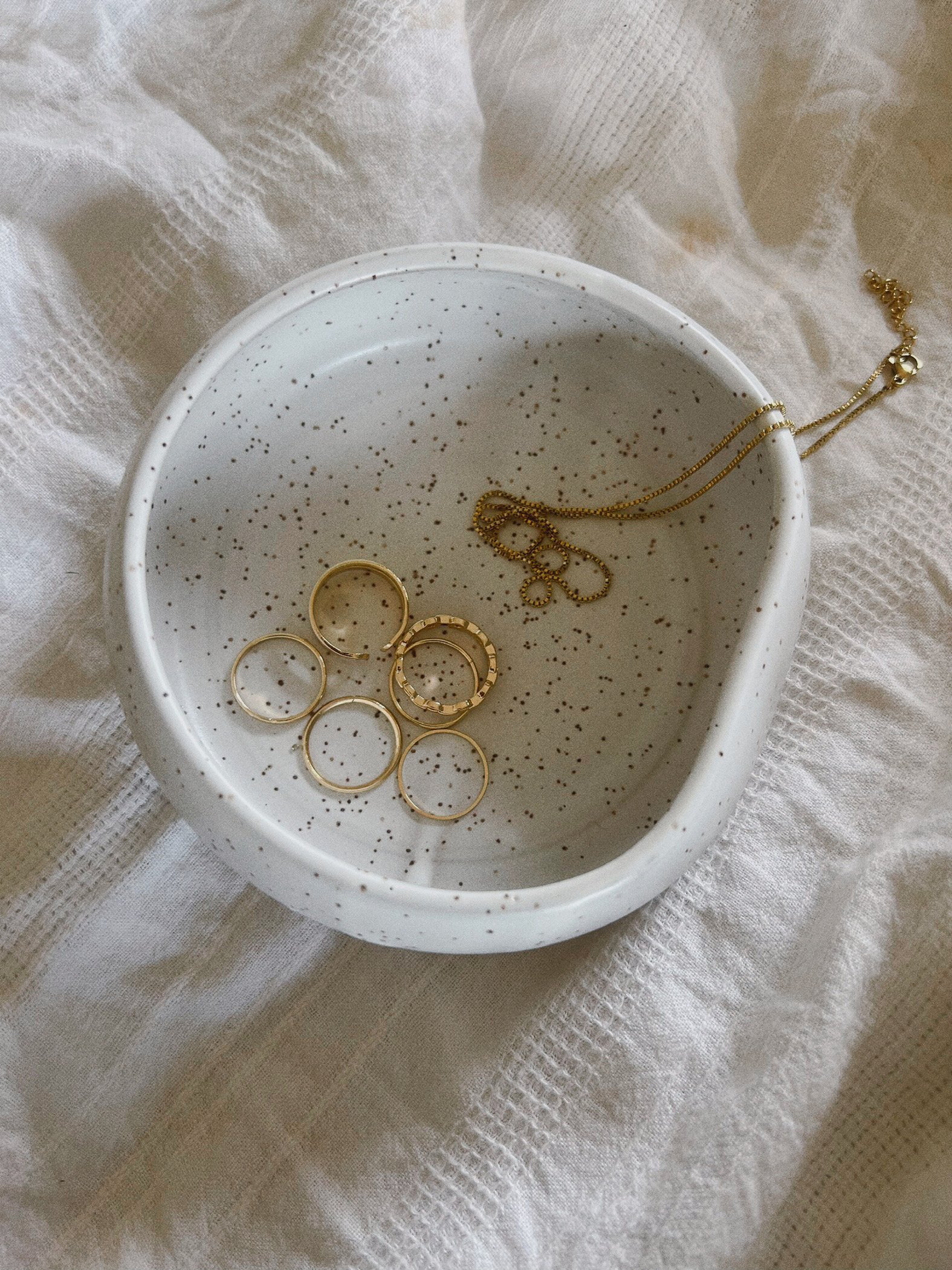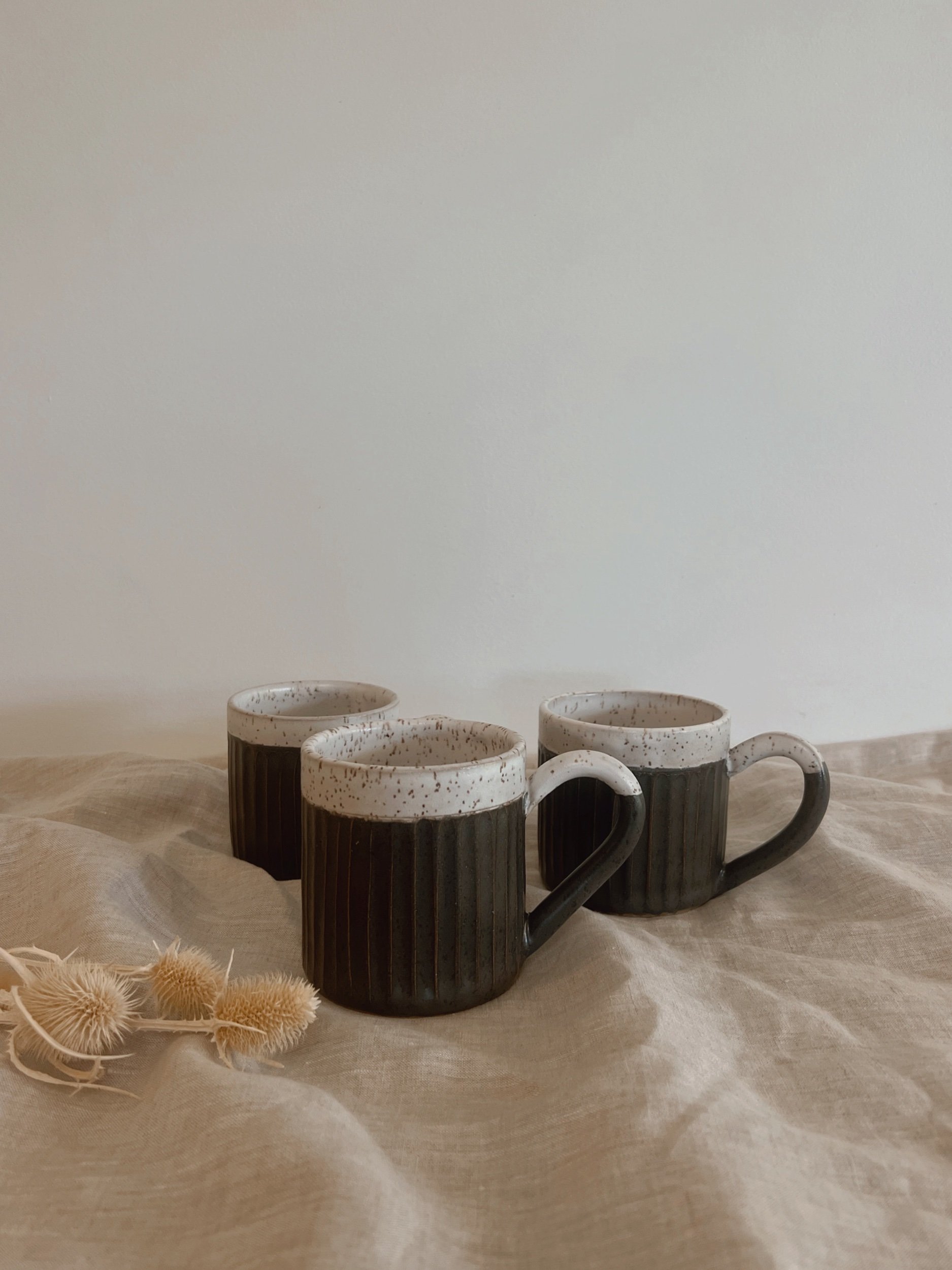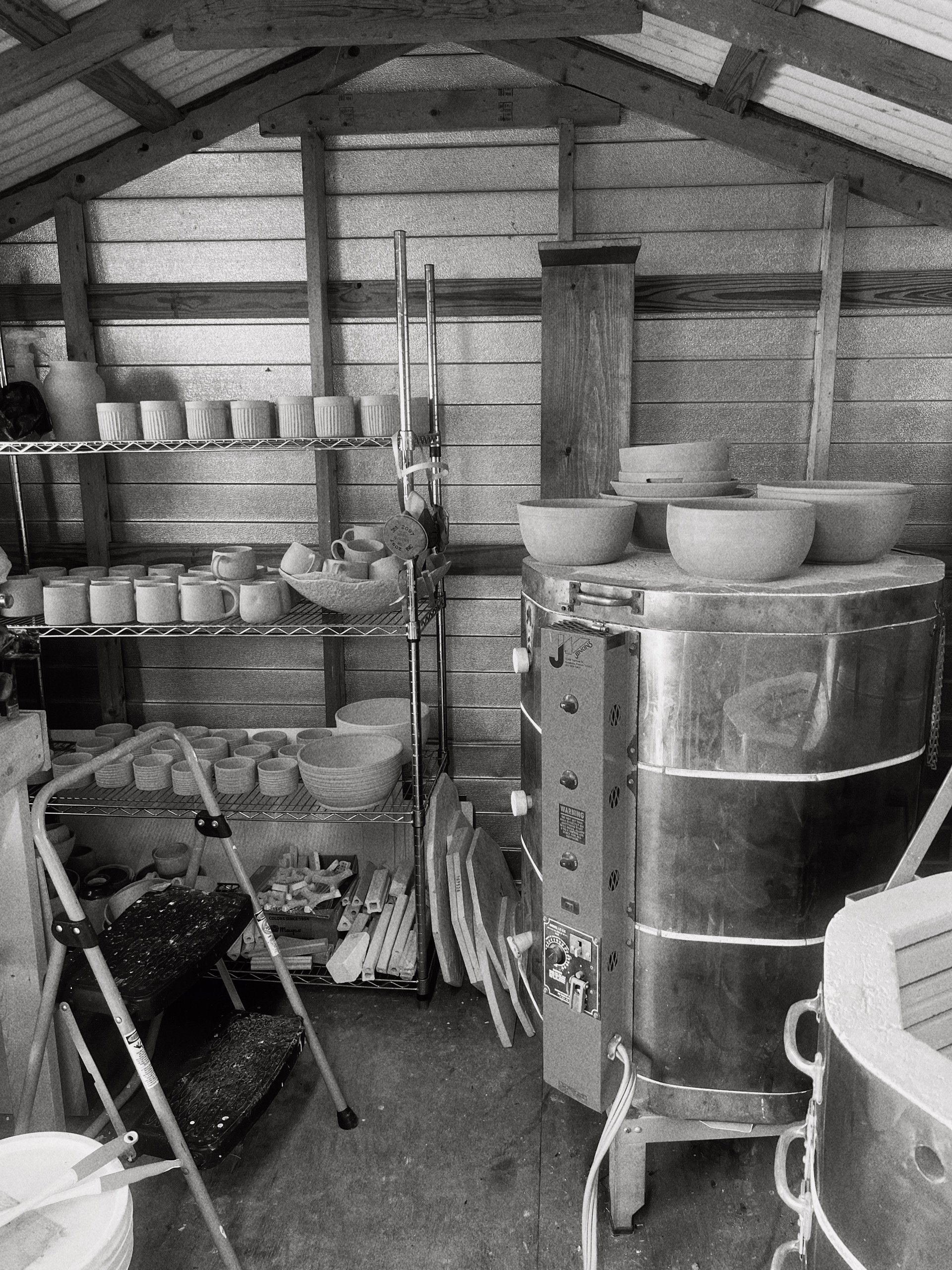what makes it so special?
-

Rarity.
Due to years of technological advancement, hand-built or wheel thrown pottery is becoming more extinct as time goes on.
-
Uniqueness.
Although some pieces may look very similar, no piece of handmade pottery is exactly the same as another. From the shape of a pot to the color variation of the glaze, each piece has original characteristics that make it its own.
-

Labor of Love.
Many hours are invested in each piece. At a minimum, there are roughly eight stages a vessel must go through before it is complete.
from start to finish
WEDGING
The clay is first prepared by a process called “wedging”. This is when the clay is pressed and folded by hand to equally distribute the particles in the clay while freeing any air pockets.
FORMING
The clay is then placed on the wheel to be formed and shaped. After the pot is made, it is removed from the wheel to dry to a “leather hard” stage. The piece is then placed back on the wheel for trimming. Trimming gets rid of excess clay on the body. This is the time to add extra characteristics like footings and carvings.
FIRST FIRING
After the pot has been trimmed, it has to be completely dry before placing it in the kiln for a “bisque fire”.
GLAZING
After the firing is complete, the pot is sanded down and glaze is applied to give it color. There are so many ways to apply glazes, and with each technique comes a wide variety of patterns, textures, and colors.
FINAL FIRING
Once the glaze has dried the pot is put back in the kiln. At this point, the kiln reaches its hottest temperature, ranging from 2,000 to 2,600 degrees Fahrenheit.
Some pots can explode or crack during kiln fires and the whole piece has to be remade.
COMPLETION
Although the process is lengthy and the results can be very unpredictable, opening the kiln to reveal the final product makes all the invested time worth it.





